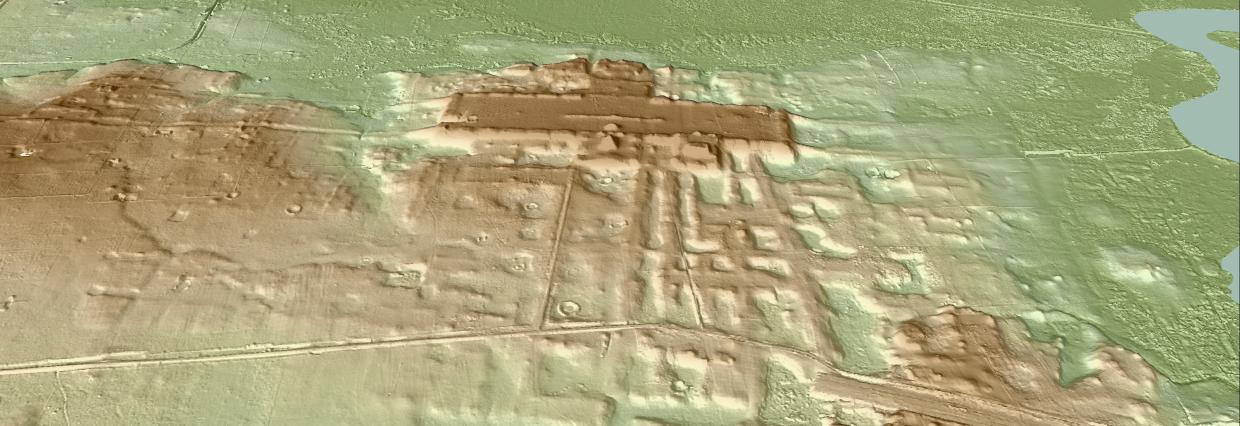
Origins of Mesoamerican astronomy and calendar at least a thousand years earlier than previously thought
The ancient Mesoamericans, especially the Maya, are well known for their sophisticated calendar system and astronomical knowledge, attested in monumental inscriptions and manuscripts, most of which date from the Classic and Postclassic periods (c. 250 to 1520 CE). I. Šprajc, T. Inomata, and A. F. Aveni, however, show that the earliest evidence for astronomical observations and the use of the calendar, particularly the characteristic Mesoamerican 260-day cycle, is provided by the orientations of many monumental architectural complexes along the southern Gulf Coast in Mexico, which predate the oldest reliable written records by nearly a millennium.
Recent research based on aerial laser scanning (lidar) in this area, which extends from the core zone of the Olmec civilization to the western Maya Lowlands, led to the discovery of a large number of previously unknown archaeological sites, including many ceremonial architectural complexes dating to the late second and early first millennia BCE (https://doi.org/10.1038/s41586-020-2343-4; https://doi.org/10.1038/s41562-021-01218-1). The lidar data offered important advantages for the study of orientations. The impressive early constructions are so large, aside from being partially deteriorated and damaged by modern development, that they cannot be accurately perceived in the field, but are clearly visible on lidar imagery. In total, the researchers were able to determine the orientations of 344 structures and architectural complexes. This was important because, as they note, any attempt to uncover possible astronomical bases of orientations can only yield reliable results if the analyses are based on a sufficiently large dataset.
Previous archaeoastronomical studies in Mesoamerica have demonstrated that the important civic and ceremonial buildings were largely oriented to sunrises or sunsets on specific dates, which are concentrated in four seasons of the year and tend to be separated by multiples of 13 and 20 days (https://doi.org/10.1007/s10814-017-9109-z;https://doi.org/10.1371/journal.pone.0250785). Since these were elementary periods of the Mesoamerican calendar, the orientations allowed the use of easily manageable observational schemes that facilitated a proper scheduling of ceremonies related to agricultural or other subsistence activities (the dates of the 260-day calendrical cycle separated by multiples of 13/20 days had the same number/sign). Solar orientations also prevail along the southern Gulf Coast and the corresponding dates and intervals exhibit similar distribution patterns. The constructions included in the study pertain to the period from about 1400 BCE (late phase of the Early Formative) to about 1000 CE (end of the Classic period), but the earliest complexes recording dates separated by multiples of 13 and 20 days were built during the Early-to-Middle Formative transition. Since the orientations marking these intervals would have made sense only in combination with the 260-day count, the chronological and alignment data analyzed in this study indicate that this ritually important calendrical cycle was in use by 1000 BCE at the latest, during the period when maize agriculture practiced by communities in permanent settlements was becoming increasingly important, replacing the earlier lifestyle of mobile hunters and gatherers. Significantly, the most widespread of the early orientation groups matches sunrises on February 11 and October 29, exactly 260 days apart. The same dates were recorded by the largest number of orientations in the later Lowland Maya architecture.
While the alignments related to the Sun and analyzed in the study represent the earliest evidence for the use of the 260-day calendar, the authors have also identified several early orientations to the major extremes of Venus and the Moon. Their research results thus reveal that the observations leading to the sophisticated astronomical knowledge of the Classic and Postclassic periods were underway many centuries before it was first attested in epigraphic records. The study exemplifies the potential of archaeoastronomical research of architectural orientations and the utility of a rigorous methodology used in the analyses of alignment data.
Full article: http://www.science.org/doi/10.1126/sciadv.abq7675